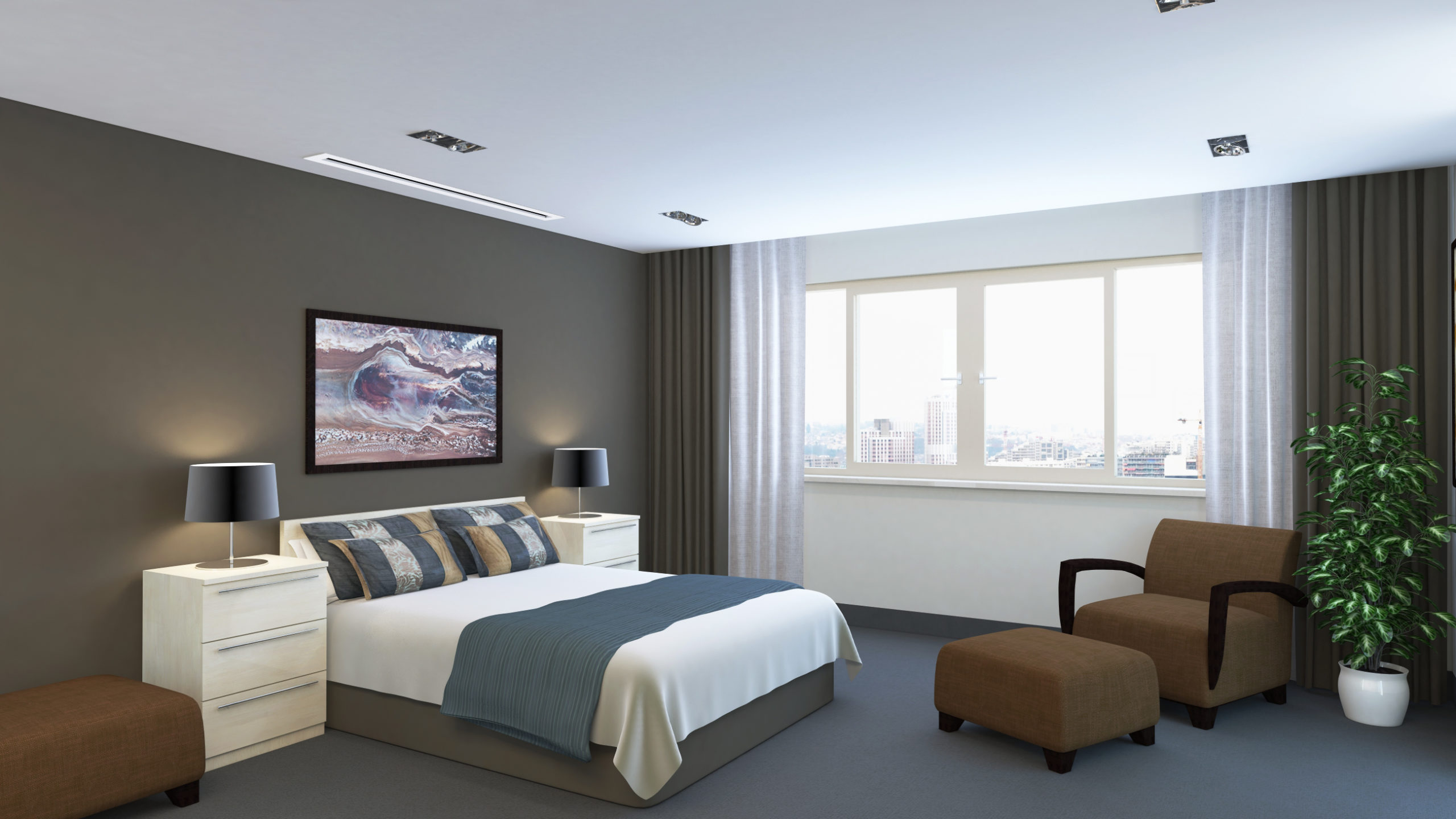Choosing the right cooling system is a crucial decision for any homeowner. Whether you’re renovating, building a new home, or simply looking to upgrade your existing setup, understanding the differences between room air conditioners (window units and mini-splits) and central air conditioning is essential. This guide breaks down the pros, cons, and key considerations to help you make an informed choice that aligns with your budget, home, and lifestyle.
Single-Room Cooling vs. Whole-Home Comfort
Choosing between a room AC unit and a central air conditioning system depends largely on your cooling needs and the size of your home. Room AC units are ideal for cooling individual rooms or smaller apartments. Central AC, on the other hand, provides consistent cooling throughout your entire house via a network of ducts. Think of room ACs as soloists, perfect for targeted cooling, while central AC is the conductor of a whole-home orchestra of comfortable temperatures.
Room AC: Targeted Cooling Power
Room air conditioners come in various forms, including window units, portable units, and mini-splits. Each offers unique advantages and disadvantages.
Window Units
These self-contained units are installed in windows, offering a simple cooling solution for single rooms.
Pros:
- Budget-Friendly: Window units are the most affordable option, with prices ranging from $150 to upwards of $1,000 depending on features and cooling capacity.
- Easy Installation: They are generally easy to install, often requiring minimal DIY skills.
- Zonal Control: Cool only the rooms you’re using, saving energy and money.
Cons:
- Limited Cooling Area: Effective only for the room where they’re installed.
- Noise Levels: Some models can be noisy, disrupting sleep or relaxation.
- Security Concerns: Can pose a security risk if not properly installed.
Portable Units
These units offer flexibility as they can be moved between rooms, but they still require venting through a window or wall.
Pros:
- Portability: Can be moved from room to room as needed.
- No Permanent Installation: Doesn’t require permanent window modification.
Cons:
- Less Efficient: Typically less energy-efficient than window units.
- Venting Requirements: Still requires venting, which can be cumbersome.
- Bulkier: Can take up significant floor space.
Mini-Splits
Ductless mini-splits offer a more permanent and efficient solution for cooling individual rooms or zones within a house.
Pros:
- Energy Efficiency: More energy-efficient than window units or portable ACs.
- Quiet Operation: Operate much more quietly than traditional window units.
- Zonal Control: Ideal for cooling specific areas without the need for ductwork.
Cons:
- Higher Upfront Cost: More expensive than window units, but less than central air conditioning systems.
- Professional Installation: Requires professional installation.
Central AC: Consistent Whole-Home Comfort
Central AC systems use a network of ducts to distribute cool air throughout an entire home.
Pros:
- Consistent Cooling: Provides even temperatures throughout the house.
- Improved Air Quality: Can integrate with air filtration systems for cleaner air.
- Increased Home Value: Can add value to your home.
Cons:
- High Upfront Cost: Requires a significant initial investment for equipment and installation, ranging from $3,000 to $7,000 (or $7,900-$11,900 nationally, potentially more with ductwork).
- Ductwork Required: If your home lacks ductwork, installation can be costly and disruptive.
- Higher Operating Costs: Generally has higher operating costs than a single room AC unit, but potentially less than cooling a larger area with multiple window units. Regular maintenance also contributes to long-term expenses.
Choosing the Right System: Key Considerations
| Feature | Room AC | Central AC |
|---|---|---|
| Cooling Area | Single room or small area | Entire home |
| Installation | Easy DIY (window/portable) or professional (mini-split) | Professional installation required |
| Cost | Lower upfront, potentially higher running cost | Higher installation, moderate maintenance |
| Energy Efficiency | Lower (window/portable), Higher (mini-split) | Generally more efficient for whole homes |
| Noise Levels | Varies; can be noisy | Quieter |
| Aesthetics | Can be obtrusive | Hidden components (except vents) |
- Home Size: For smaller homes or apartments, room AC units are often sufficient. Larger homes benefit from the consistent cooling of central AC.
- Budget: Consider both upfront and long-term operating costs. Room ACs have lower initial costs but may be less cost-effective for cooling large areas compared to a central AC system.
- Existing Ductwork: If your home lacks ductwork, central AC installation becomes significantly more expensive. Mini-splits offer a ductless alternative for zoned cooling.
- Climate: In milder climates, room AC units might suffice. Hotter climates may necessitate the whole-home cooling power of central AC.
- Lifestyle and Preferences: Consider your noise tolerance, aesthetic preferences, and desired level of temperature control.
Don’t let the cost of pre-mixed hydroponic fertilizers strain your budget, choose your own nutrients and create a custom fertilizer using this DIY guide to Custom Hydroponic Fertilizers. We provide a detailed guide and tips for above ground pool filter maintenance and repair to help you save time and avoid unnecessary expenses.
Consulting a qualified HVAC professional is highly recommended. They can assess your home, discuss your needs, and provide personalized recommendations tailored to your specific situation. They can also offer insights into available rebates and incentives for energy-efficient upgrades, which could influence your final decision.
- Dora the Explorer Wipe-Off Fun: Safe & Mess-Free Activities for Little Explorers - April 18, 2025
- Does Lemongrass Repel Mosquitoes? Fact vs. Fiction + How to Use It - April 18, 2025
- Do Woodchucks Climb Trees?Fact vs. Fiction - April 18, 2025










